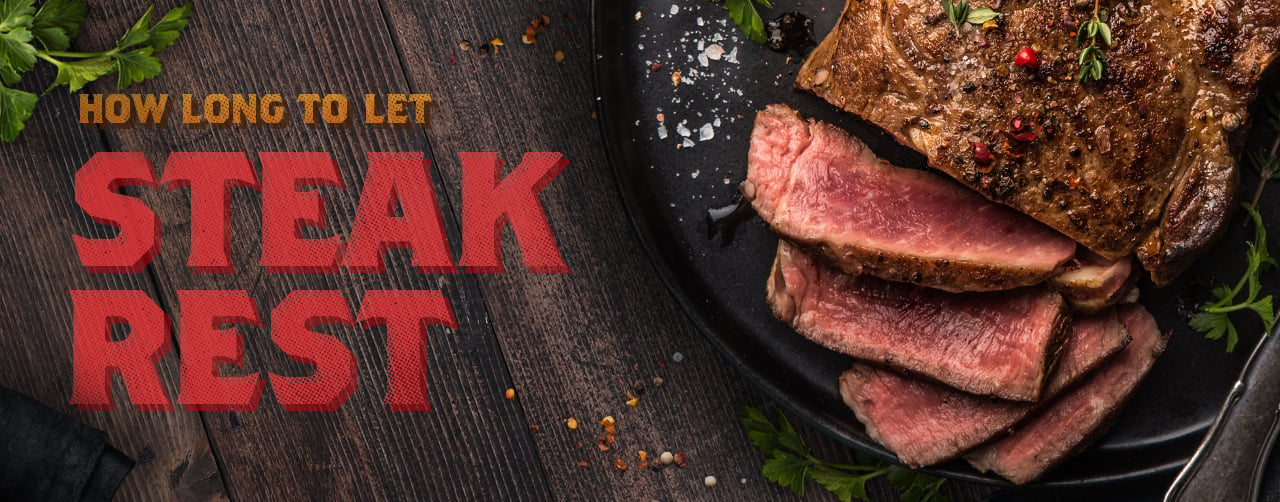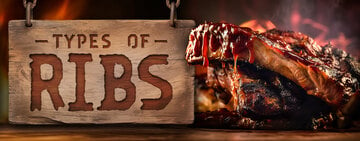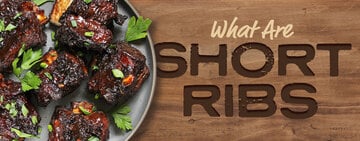Resting Meat: Why You Should and for How Long
Last updated on Jun 6, 2024Janine JonesIf you’re grilling the best cuts of steak, you want to make sure these premium cuts shine. Letting meat rest is an essential part of the cooking process to serve quality meat. This is true for chicken, lamb, pork, game meats, and even some fish. We explain exactly why and how long meat needs to rest so your menu has customers coming back for more.
How to Rest a Steak
Check out our video to learn how to rest a steak the proper way:
How Long to Let Meat Rest
As a general rule, rest thinner cuts of meat for a minimum of 5-7 minutes. Thick cuts should rest for 10-20 minutes before you cut into them.
Meat Resting Times and Temperature

The goal with steak is for the center to be between 120-130 degrees Fahrenheit and the exterior between 125-140 degrees Fahrenheit. You can use a probe thermometer to check the internal temperature, but any further cutting into the meat will cause the juices to expel from the fibers.
Use the following timing recommendations to learn how long to rest steak so that the flavorful juices have time to distribute through your meat:
- Rest meat for 5 minutes per inch of thickness.
- Rest meat for 10 minutes per pound.
- Rest meat for 1 minute for every 100 grams.
- Rest thin meat for half the time it took to cook.
- Rest thick meat for the whole time it took to cook.
How to Rest Steak
Follow the steps below to properly rest a steak, roast, or any type of meat:
- Remove the meat from the oven or off the burner.
- Transfer the meat to a cutting board, warm plate, or serving platter.
- Trap heat by tenting the pan with aluminum foil.
- Remove the foil after the appropriate rest time.
- Plate and serve.
Why Do You Let Meat Rest?
Internal juices constrict during the cooking process, and resting meat allows its juices to reabsorb and redistribute. Cutting it too soon will cause its juice to pool out and yield a dry cut of meat. We break down what happens to muscle fibers when they're heated so you can understand this phenomenon:
What Happens to Meat When You Cook It?
This is what happens to the muscle fibers in meat while it cooks:
- When the steak is heated, the muscle fibers constrict.
- This constriction pushes the juices in those fibers away from the heat source and towards the center of the meat.
- Since all of the moisture is concentrated in the center of the meat, it will pour out of the meat as soon as it is cut, making it look unappealing and bloody while taking the moisture and flavor with it.
- The steak ends up dry and flavorless.
What Happens When You Let Meat Rest?
This is why it is so important to rest meat before serving:
- As the meat rests, the constricted muscle fibers begin to relax.
- The pressure on the juices is slowly released and they redistribute towards the edges of the meat.
- By letting the meat rest, you achieve an evenly moist and flavorful steak.
What Is Carryover Cooking?
Carryover cooking means your food is still cooking after it's removed from the heating element. Why does carryover cooking occur? During the resting period, the outer layers of your meat cool while the temperature at the center continues to rise. The latent heat traveling through the meat induces carryover cooking. The meat achieves its final resting temperature when its outer and inner temperatures meet.
How Much Does Meat Temperature Rise When Resting?

The density of your meat determines how much its temperature rises when resting. While you'll set your unit to your desired grilling temperature, variables like hot zones can induce more carryover, and small cuts of meat, such as steaks, are less prone to carryover cooking. With that in mind, we provide guidelines for carryover cooking large and small cuts of meat below:
- Small Meat Cuts Temperature Rise - Smaller meats like hamburgers, chicken breasts, and steak will continue to rise between 3-6 degrees Fahrenheit when resting.
- Large Meat Cuts Temperature Rise - Larger roasts such as pork tenderloin and turkey can rise between 10-15 degrees Fahrenheit when resting.
When to Remove Steak from Grill
Factor carryover cooking into your total cooking time and remove your steak from the grill when it’s between 3-5 degrees Fahrenheit under its ideal doneness temperature. For example, if you're preparing an asado and want to serve a thick picanha steak medium-rare (130 degrees Fahrenheit), remove it when it reaches 126 degrees Fahrenheit.
Resting Meat FAQs
As chefs start resting their meat, they may have some additional questions about how to achieve the best results. To help you engineer the perfect steak, we answer the most frequently asked questions about resting meat below.
How Long Can Cooked Meat Sit Out?
Resting meat should never run the risk of time-temperature abuse. Cooked meat can only sit out for less than two hours before it enters unsafe temperatures. According to the USDA, food items between 40-140 degrees Fahrenheit are in the Temperature Danger Zone, and at risk of growing bacteria. To prevent food poisoning, don't leave food out for extended periods.
Should You Wrap Steak in Foil?
Tenting steak in aluminum foil after grilling keeps the meat warm during the resting period. When it's 3-5 degrees under its ideal doneness temperature, remove your steak from the grill and loosely wrap aluminum foil around it.
Give your prime-grade beef, ribs, or chicken the time they need to rest before serving. Your guests and customers will be impressed by the flavorful results!



